One Foot in Heaven

Brief Synopsis
Cast & Crew
Irving Rapper
Fredric March
Martha Scott
Beulah Bondi
Gene Lockhart
Elisabeth Fraser
Film Details
Technical Specs

Synopsis
In Stratford, Ontario in 1904, William Spence is inspired by an evangelical speaker to study for the ministry instead of entering medical school. Although Will's first post as an ordained Methodist minister is a small town in Iowa, Hope, his new wife, devotedly accompanies him. The dilapidated parsonage is a great disappointment to Hope, but soon the women of the church arrive to help straighten things out and Hope learns in the process that the parsonage will always be the domain of these women. The Spences move from parish to parish and along the way first Eileen and then Hartzell are born to them, but they are still very poor. During World War I, Will augments his income by performing weddings. When a third baby, a boy, is born, Hope and Will cannot agree on a name, and he remains unbaptized at three months old. Hope wants to name the baby William Spence, Jr. and Will, who does not like the idea, insists that he should be given the middle name Frazer. Will finally agrees to name the baby the following Sunday and baptizes him William Frazer Spence. Although Eileen and Hartzell expect their parents to quarrel after the service, Hope agrees that the baby shall be called Frazer. Hartzell has a hard time with the idea that a minister's son should be an example to the other boys. Will explains that "a pastor's family walks a tightrope, balancing with one foot on earth and one foot already in heaven." When a chance visitor reveals that she has seen Hartzell at the movies, a pastime forbidden to Methodists, Will decides to accompany his son to the theater and point out why the film is bad for him. The scheduled film stars William S. Hart, and rather than finding the movie sinful, Will is charmed by it and the following Sunday, preaches a sermon advising his parishioners that young people may have something to teach their elders. Will finishes out the war years as an Army chaplain. The 1920s are a time of economic prosperity for the country, but not for the Spences, whose parsonage in Denver is coming apart at the seams. Will resolves to build a new church and parsonage, but his plans are thwarted by power struggles among the members of the church. He loses one wealthy church member, Mrs. Lydia Sandow, when he refuses to stop visiting her chauffeur and another after he replaces the off-key choir, headed by Mrs. Preston Thurston, with a children's choir. Soon, Hartzell is expelled from school because he is falsely accused of making a young girl pregnant. Will takes advantage of a job offer to seek out the girl's family in California, where they have moved, and learns that there is no truth to the rumor. Back in Denver, Will confronts the Thurstons, who started the rumors, and gives them a choice: he will call them out in church or they can contribute a large sum to the building fund. A year later, the church is built and the family is happily ensconced in a new parsonage. Their comfort is short-lived, however, because Will has accepted a new job, confident that he leaves behind a revitalized church.

Director

Irving Rapper
Cast

Fredric March

Martha Scott

Beulah Bondi

Gene Lockhart
Elisabeth Fraser
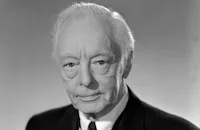
Harry Davenport

Laura Hope Crews
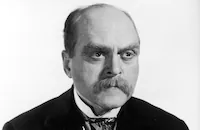
Grant Mitchell

Moroni Olsen

Frankie Thomas
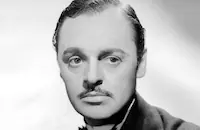
Jerome Cowan

Ernest Cossart

Nana Bryant
Carlotta Jelm
Peter Caldwell
Casey Johnson
The Robert Mitchell Boychoir
Mary Field

Hobart Bosworth

Roscoe Ates
Clara Blandick

Charles Halton
Paula Trueman
Virginia Brissac
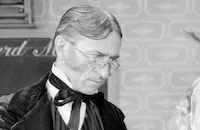
Olin Howland
Frank Mayo
Fred Kelsey
Vera Lewis
Dorothy Vaughan
Tempe Pigott
Sarah Edwards
Herbert Heywood
Milt Kibbee

Charles Drake

Byron Barr
Mary Brodell
Ann Edmonds
Sol Gorss
Creighton Hale
Reginald Simpson
Mira Mckinney
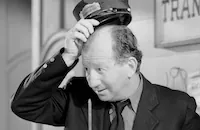
Hank Mann
William Gould
Gertrude W. Hoffman
Dick Elliott
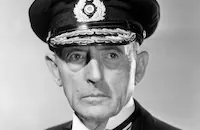
Frank Reicher
Charlotte Treadway
Frank Marlowe
Walter Soderling

Fern Emmett
Harlan Briggs
Audra Lindley
Jean Maddox

Jane Randolph
Ted Crane
Sandy Shaw
Jed Breslau
Joan Anderson
Ruth Robinson
Betty Mack
Joyce Tucker
Mickey Kuhn
Sonny Bupp
Harry Lewis
Leah Baird
Lottie Williams
Inez Gay
Bess Meyers
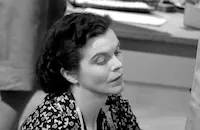
Dorothy Adams
Virginia Sale

Jack Mower
Sam Rice
Crew
Milo Anderson
Eddie Blatt
Leo F. Forbstein
Hugo Friedhofer
Jesse Hibbs
Engelbert Humperdinck
Robert Lord
Warren Low
Dr. Norman Vincent Peale
Casey Robinson
Charles Rosher
Francis J. Scheid
Don Siegel
Max Steiner
Samuel Stone
Samuel Wesley
Perc Westmore
Adelheid Wette
Carl Jules Weyl

Videos
Movie Clip



Trailer
Hosted Intro
Film Details
Technical Specs

Award Nominations
Best Picture
Articles
One Foot in Heaven
Fredric March as Rev. William Spence in One Foot in Heaven
Hollywood gave religion a fair shake in the 1941 family drama, One Foot in Heaven, which was made with a minimum of sentimentality. For once, the film capital captured a true sense of faith by concentrating on an exemplary life, that of Methodist minister William Spence, a specialist in turning around failing parishes. The fact that Spence acted on his faith rather than just talking about it helped dramatize the spiritual issues and kept the film from turning preachy and didactic. Also helping greatly was Fredric March's very human portrait of the reverend and Irving Rapper's eloquently simple direction, with numerous close-ups that required the large cast to work on a realistic scale and avoid theatricality.
It helped greatly that the story was true, based on Hartzell Spence's best-selling biography of his father. When reporters first asked Spence how he felt about Warner Bros.' deciding to film his family's story, he confided that he hoped Canadian-born Raymond Massey, who had just triumphed on Broadway in the title role of Abe Lincoln in Illinois, would be cast as the Rev. Spence. When the author consulted with his mother about the sale, however, she suggested March for the role. Warner's didn't consult with either, but cast March simply on the basis of his continuing popularity with film audiences and his reputation as one of America's finest actors (and with John Barrymore's growing dissolution, many critics were hailing March as the nation's top thespian).
The timing couldn't have been better for March. Not only did it offer him a challenging role with the chance to age twenty years during the course of the film (the older March at film's end looks remarkably as the actor would as he started to grow older), but also it offered him an all-American role at a time when his patriotism was under suspicion. March was one of several actors (including James Cagney and Franchot Tone) under investigation by Rep. Martin Dies' precursor of the House Un-American Activities Committee in 1940 for their support of liberal causes. Although the accused actors were all exonerated, the controversy threatened their popularity and made finding non-controversial but quality films an imperative. With the chance to star in One Foot in Heaven and a film version of Joseph Conrad's Destiny, March got the Theatre Guild to postpone the Broadway opening of Sophie Treadwell's Hope for Heaven, which he had been touring successfully with wife Florence Eldridge.
For leading lady, Warner's initially assigned Olivia de Havilland, but then decided she was better cast opposite Errol Flynn in They Died With Their Boots On (1941), a move that couldn't have pleased her as she was eager to shed her identification as his leading lady and establish herself as a dramatic actress. In her place, they cast Martha Scott, then one of the hottest young actresses in Hollywood. Scott had made her screen debut re-creating her stage role as Emily in Our Town (1940) and won an Oscar® nomination for the role. She had followed it with Cheers for Miss Bishop (1941), which gave her her first opportunity to age on screen as a dedicated schoolteacher who sacrifices her romantic happiness for her students.
Anatole Litvak was the first director assigned to One Foot in Heaven, but for some reason the studio decided to pull him from the project and entrust it to Irving Rapper, who had started his Hollywood career as dialogue director for such foreign-born directors as Litvak and Michael Curtiz. Rapper had moved into the director's chair with Shining Victory (1941), a medical drama whose surprising box-office success or inspirational message may have inspired the studio to put him in charge of One Foot in Heaven. Rapper prodded his cast to perform simply and naturalistically, using close-ups to discourage overacting. But his position as a tyro showed when he had to shoot a big action scene involving a raging fire that was shot on location in Los Angeles. He was so intrigued by the mechanics of staging the fire and the sheer spectacle of it all that when the cameras finally rolled and flames shot to the skies, he was so enthralled he temporarily forgot to call action, despite the fact that he had rehearsed the scene effectively during numerous dry runs.
To guarantee authenticity (and possibly generate additional publicity), Warner's hired the Rev. Norman Vincent Peale, already well-known from his weekly radio broadcasts and the book Faith Is the Answer: A Psychiatrist and a Pastor Discuss Your Problems (1940), to serve as a consultant. Although affiliated with the Reformed Church of America, Peale was the son of a Methodist preacher and had been raised in that branch of Protestantism. Many in the cast found his presence intimidating, as they felt compelled to clean up their language whenever he was on set. Also visiting was Rev. Spence's widow, who told the press how much March resembled her late husband and would later describe Scott as "my third daughter." After seeing One Foot in Heaven she sent March her husband's leather-bound hymnal and Scott the hymnal her husband had given her during their courtship.
In one of the film's most memorable sequences, March, who has preached heavily against the evils of the movies, discovers his son has been sneaking off to the cinema. He accompanies him to a screening of William S. Hart's silent Western The Silent Man (1917) to point out its wickedness, only to be enthralled by its simple moral lesson, which becomes the subject of his next sermon. Not only did Warner's include scenes from the Hart film in One Foot in Heaven, but they made the retired star guest of honor at the film's Hollywood premiere.
With all the intelligence Warner Bros. invested in One Foot in Heaven, the film scored well with critics, particularly the New York Times' Bosley Crowther, who praised it as "a rich experience" in his initial review, touted it in subsequent Sunday columns and included it in his ten-best list for the year. Despite his efforts, the film did not do its best business in New York. A publicity campaign aimed at small-town ministers paid off, however, with several preachers including references in their sermons and Sunday bulletins. In small-town America, where citizens were concerned about the growing unrest in Europe and the Pacific, and where the film would play extensively after the U.S. entered World War II, One Foot in Heaven did very well and would remain a favorite among more spiritual filmgoers. March would also speak highly of the picture in later years, recalling it as one of his most rewarding experiences.
Producer: Hal B. Wallis
Director: Irving Rapper
Screenplay: Casey Robinson
Based on the book by Hartzell Spence
Cinematography: Charles Rosher
Art Direction: Carl Jules Weyl
Music: Max Steiner
Principal Cast: Frederic March (William Spence), Martha Scott (Hope Morris Spence), Beulah Bondi (Mrs. Lydia Sandow), Gene Lockhart (Preston Thurston), Elisabeth Fraser (Eileen Spence), Harry Davenport (Elias Samson), Laura Hope Crews (Mrs. Preston Thurston), Grant Mitchell (Clayton Potter), Moroni Olsen (Dr. John Romer), Frankie Thomas (Hartzell Spence), Jerome Cowan (Dr. Horrigan), Ernest Cossart (Mr. John E. Morris), Nana Bryant (Mrs. Morris), Roscoe Ates (George Reynolds), Clara Blandick (Mrs. 'Sister' Watkins), Hobart Bosworth (Richard Hardy Case), Virginia Brissac (Mrs. Jellison), Sonny Bupp (Boy), Chester Conklin (Crying Man), Creighton Hale (Church Usher), Olin Howland (Train Station Master), Milton Kibbee (Alf McAfee), Audra Lindley (Mother), Gig Young (Groom).
BW-108m. Closed Captioning.
by Frank Miller

One Foot in Heaven
Martha Scott, 1914-2003
Martha Ellen Scott was born in Jamesport, Missouri on September 24, 1914, and raised in Kansas City, where a high school teacher encouraged her interest in acting. She majored in drama at the University of Michigan and after graduation, she joined The Globe Theatre Troupe, a stock company that performed truncated Shakespeare at the Chicago World's Fair in between 1933-34. She went to New York soon after and found work in radio and stock before playing making her breakthrough as Emily Webb in Our Town. When the play opened on Broadway in February 1938, Scott received glowing reviews in the pivotal role of Emily, the wistful girl-next-door in Grovers Corners, New Hampshire, who marries her high school sweetheart, dies in pregnancy and gets to relive a single day back on Earth. Her stage success brought her to Hollywood, where she continued her role in Sam Wood's film adaptation of Out Town (1940). Scott received an Academy Award nomination for best actress and was immediately hailed as the year's new female discovery.
She gave nicely understated performances in her next few films: as Jane Peyton Howard in Frank Lloyd's historical The Howards of Virginia (1940), opposite Cary Grant; the dedicated school teacher in Tay Garnett's Cheers for Miss Bishop (1941) in which she aged convincingly from 17 to 85; and as a devoted wife to preacher Frederic March in Irving Rapper's warm family drama One Foot in Heaven (1941). Sadly, Scott's maturity and sensitivity ran against the glamour-girl persona that was popular in the '40s (best embodied by stars like Lana Turner and Veronica Lake) and her film appearances were few and far between for the remainder of the decade.
Her fortunes brightened in the '50s, when she found roles in major productions, such as a suburban wife trapped in her home by fugitives, led by Humphrey Bogart, in William Wyler's taut The Desperate Hours (1955) and played Charlton Heston's mother in the Cecil B. Demille's The Ten Commandments (1956) and again for William Wyler in Ben-Hur (1959). Scott found steady work for the next 30 years in matronly roles, most notably on television, where she played Bob Newhart's mother on The Bob Newhart Show (1972-1978) and the mother of Sue Ellen Ewing on Dallas (1978-1991). Her second husband, pianist and Pulitzer Prize-winning composer Mel Powell, died in 1998. Survivors include a son and two daughters.
by Michael T. Toole
Martha Scott, 1914-2003
Quotes
Trivia
William S. Hart was the guest of honor at the Hollywood premiere of this movie, since his movie Silent Man, The (1917) figures promimently in the plot.
Raymond Massey was author Hartzell Spence's choice to play his father.
Olivia de Havilland was slated to co-star with Fredric March but was reassigned to _They Died with Their Boots On (1941)_ .
Notes
The film begins with the following written acknowledgment: "For their valuable aid during the production of this motion picture, we acknowledge a great debt of gratitude to the members of the Advisory Committee of Clergymen organized by [the] Christian Herald: Bishop James Edward Freeman, Washington, D.C., Chairman; Dr. Daniel A. Poling, Philadelphia, Pa., Secretary; Bishop Charles Wesley Flint, Syracuse, N. Y.; Dr. Edgar DeWitt Jones, Detroit, Mich.; Dr. Charles E. Kerr, Tulsa, Okla."
Harzell Spence's best-selling book was based on the life of his father, a small-town Methodist minister in Iowa and Colorado from 1904 through the 1920s. A January 20, 1941 article in Hollywood Citizen-News noted that Raymond Massey was Hartzell Spence's choice to play his father.
News items in Hollywood Reporter add the following information: Raymond Massey and Alexander Knox were tested for the lead. Olivia de Havilland was slated to co-star with Fredric March, but was replaced by Martha Scott when the former was reassigned to They Died with Their Boots On. Barton MacLane was considered for a role. The California scenes were filmed at the Wilshire Methodist Church at Wilshire and Lucerne in Los Angeles. Twelve girls were added to The Robert Mitchell Choir for the performance of "The Children's Prayer."
The William S. Hart picture that the Spences watch was the 1917 film The Silent Man (see AFI Catalog of Feature Films, 1911-20; F1.4016). At the Hollywood premiere of One Foot in Heaven, Hart was the guest of honor. The film won one of seven medals awarded by Parents Magazine in 1941 and was nominated for the Best Picture Oscar. Carl E. Milliken, director of the MPPA, was so impressed with the content of the film that he wrote a letter to the trade, encouraging exhibitors to promote the film in their communities. Fredric March and Martha Scott reprised their roles in a Lux Radio Theatre broadcast on April 20, 1942. The film was subsequently adapted for the Lux Summer Theatre on July 27, 1953, starring Dana Andrews and Jeanne Bates, and the Lux Video Theatre on February 3, 1955, starring Hugh Marlowe and Ellen Drew.
















